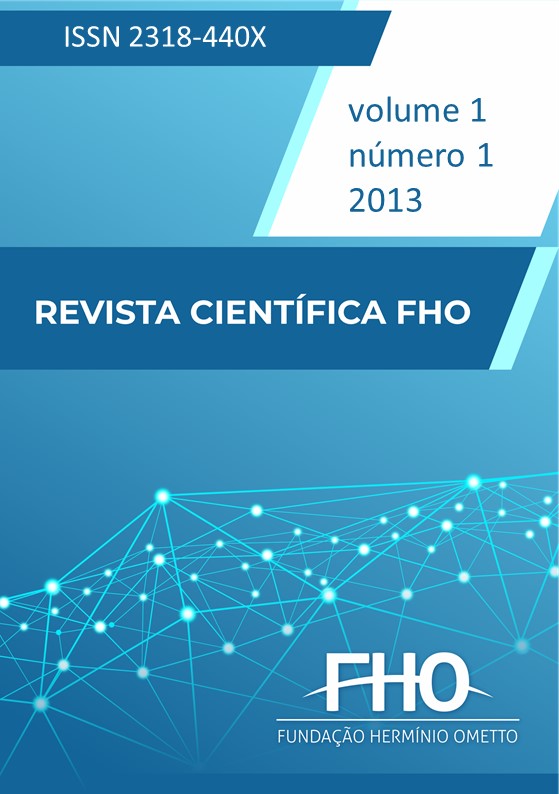Abstract
A urinary tract infection (UTI) is a major cause of medical consultation, second only to respiratory infections. The ITU is very common condition, which corresponds to much of its community and hospital infections. It is characterized by the presence of microorganisms, usually bacteria, either in the bladder, prostate, kidney or collecting system and urinary tract, which must present themselves sterile. The Candida yeasts comprise about 200 species in nature. When the urine is the source used, the isolation of yeasts varies from 25 to 71% in healthy subjects and C. albicans participates with 4 to 62% of the total. Currently Candida albicans has been cited as the species most frequently isolated in urinary infections by fungi, followed by C. glabrata. Invasive procedures, intensive use of antibiotics in treating neoplastic aggressiveness, transplant patients, among others, favor opportunistic fungal infections of the urinary tract caused by Candida. The objective is to analyze the frequency with which they occur urnárias infections caused by Candida. O present study was conducted through surveys electronically
and through studies of scientific papers. The results obtained fter the application of the proposed methodology, it is suggested that the frequency of urinary tract infection by yeasts of the genus Candida has been increasing in recent years, but further studies are needed to complete their epidemiology in Brazil and in the world, since the publications in this area are still very scarce. C. albicans is the species most commonly isolated in the urine, accounting for about 50 to 70% of clinical cases, followed by other species.
References
BAIL, L.; ITO, C. A. S.; ESMERINO, L. A. Infecção do trato urinário: comparação entre o perfil de susceptibilidade e a terapia empírica com antimicrobianos. Revista Brasileira de Análises Clínicas, Rio de Janeiro, v. 38, n. 1, 2006. p. 51-56.
BLATT, J. M.; MIRANDA, M. C. Perfil dos Microorganismos Causadores de Infecções do Trato Urinário em Pacientes Internados. Revista Panamericana de Infectologia, [S.I.], v. 7, n. 4, out./nov. 2005. p. 10-14.
BOA SAÚDE. Candidíase Infecções Fúngicas. [S.I]. 1998. Disponível em: http://boasaude.uol.com.br/lib/ShowDoc.cfm?LibDocID=3219&ReturnCatID=1765. Acesso em: 14 abr. 2011.
BOAZ, M. R. et al. A Importância de Medidas Preventivas na Profilaxia de Infecções em Pacientes Submetidos a Transplante Cardíaco nos Primeiros 30 dias de Pós Operatório. Braz J Cardiovasc Surg, [S.I.], v. 21, n. 2, maio, 2006. p. 188-193.
COLOMBO, A. L; GUIMALHÃES, T. Candidúria: uma Abordagem Clínica e Terapêutica. Revista da Sociedade Brasileira de Medicina Tropical, Uberaba, v. 40, n. 3, maio/jun., 2007.
CORDEIRO, F. et al. Avaliação da Leucocitúria em Processos Inflamatórios e Infecciosos: Relação e Interpretação Clínica. NewsLab, São Paulo, ed. 38, ano VIII, 2000. p. 118-126.
COUTO, W. J. et al. Transplantes Cardíaco e Infecção. Revista Brasileira Cirurgia Hospitalar, [S.I.], v. 16, n. 2, 2001, p. 141-51.
FERREIRA, T. M. Atividade Antifúngica do Citral em Leveduras do Gênero Candida Isoladas de Pacientes Hospitalizados. Revista do Instituto Adolfo Lutz, São Paulo, v. 68, n. 1, abr. 2009.
HEILBERG, I. P.; SCHOR, N. Abordagem Diagnóstica e Terapêutica na Infecção do Trato Urinário. Revista Associação Brasileira, [S.I], v. 49, n. 1, 2003.
HORNER, R. et al. Prevalência de Microrganismos em Infecções do Trato Urinário de Pacientes Atendidos no hospital Universitário de Santa Maria. Revista Brasileira de Análises Clínicas, [S.I], v. 38, n. 3, 2006, p. 147-150.
KOCH, V. H.; ZUCCOLOTTO, S. M. C. Infecção do Trato Urinário: em busca das evidências. Jornal de Pediatria, Rio de Janeiro, v. 79. maio/jun. 2003, p. 97-106.
LIMA, L. S. et al. Infecções do Trato Urinário. [S.I.]. n. 11, nov. 2007. Disponível em: <http://www.um.es/eglobal.br>. Acesso em: 20 abr. 2011.
MACÊDO, D. P. C. et al. Infecções Oportunistas por Leveduras e Perfil Enzimático dos Agentes Etiológico. Revista da Sociedade Brasileira de Medicina Tropical. Uberaba, v. 42. n. 2, mar./abr., 2009, p. 188-191.
MALUCHE, M. E.; SANTOS, J. I. Candida SP e Infecções: Aspectos Epidemiológicos e Laboratoriais. Revista Brasileira de Análise Clínica, [S.I.], v. 40, n. 1, 2008, p. 65.
NETO, O. M. V. Infecção do Trato Urinário. Medicina. Ribeirão Preto, v. 36, abr./dez., 2003. p. 365-369.
NISHIURA, J. L. et al. Infecção Urinária. Moreira JR Editora, [S.I.], out. 2009.
OLIVEIRA, R. D. R. et al. Infecção Urinária Hospitalar por Leveduras do Gênero Candida. Revista da Associação Médica Brasileira, São Paulo, v. 47, n. 3, jun./set. 2001.
RORIG, K. C. O. et al. Produção de Fatores de Virulência in vitro por Espécies Patogênicas do Gênero Candida. Revista da Sociedade Brasileira de Medicina Tropical, Uberaba, v. 42, n. 2, mar./abr., 2009.
STRABELLI, T. M. V. Infecção Urinária Hospitalar por leveduras do Gênero Candida. Revista Associação Medicina Brasileira, [S.I.], v. 47, n. 3, 2001. p. 169-197.
VALLE, G. C. et al. Estudo da Incidência do Gênero Candida em Hospital Público Universsitário. NewsLab, [S.I.], ed. 101, 2010, p. 202-222.

This work is licensed under a Creative Commons Attribution-NonCommercial 4.0 International License.
Copyright (c) 2013 Viviane Regina de Oliveira; Ana Laura Remédio Zeni Beretta

